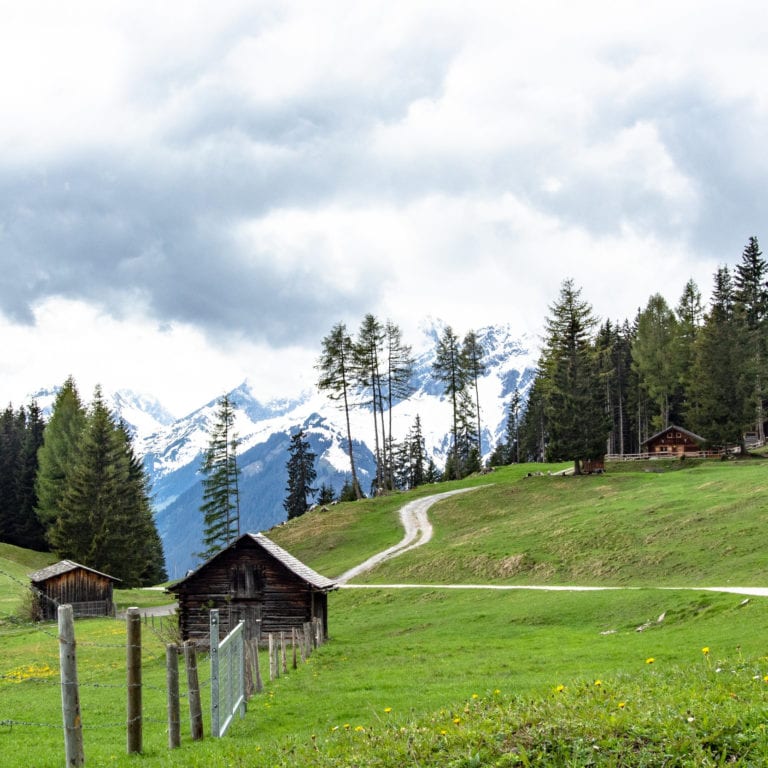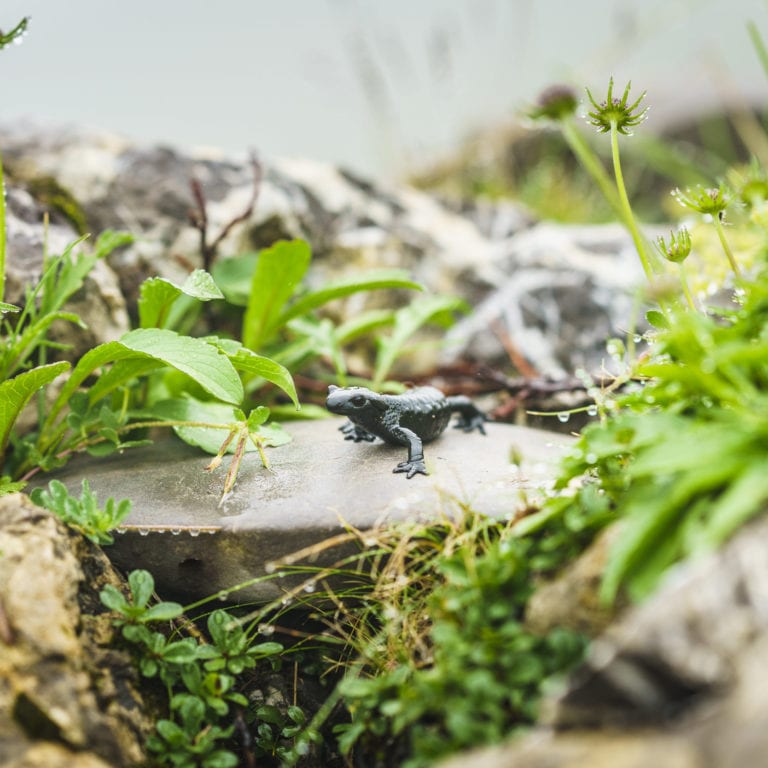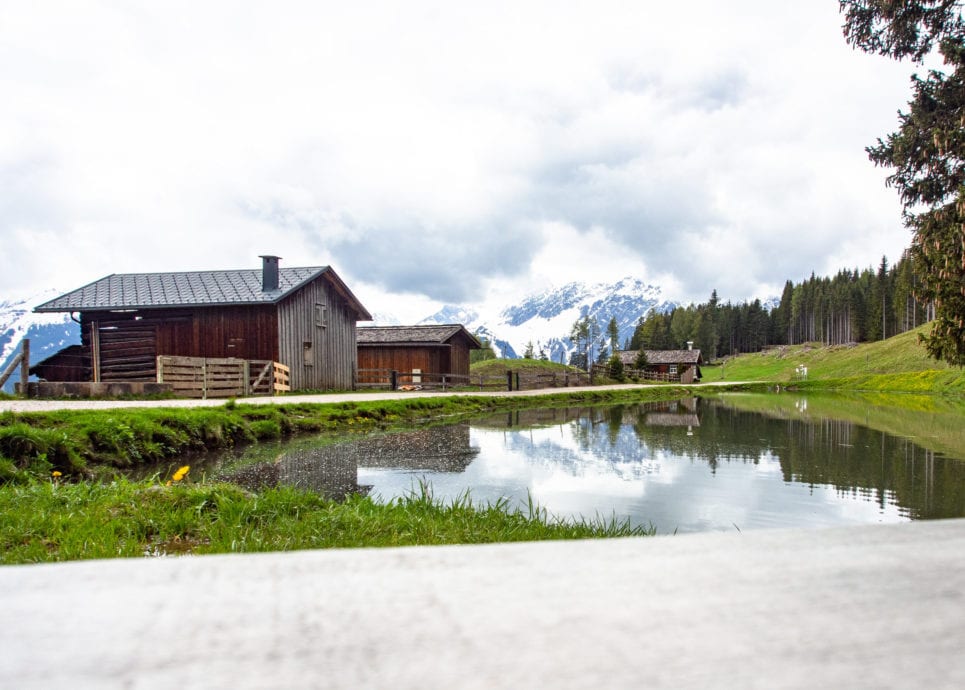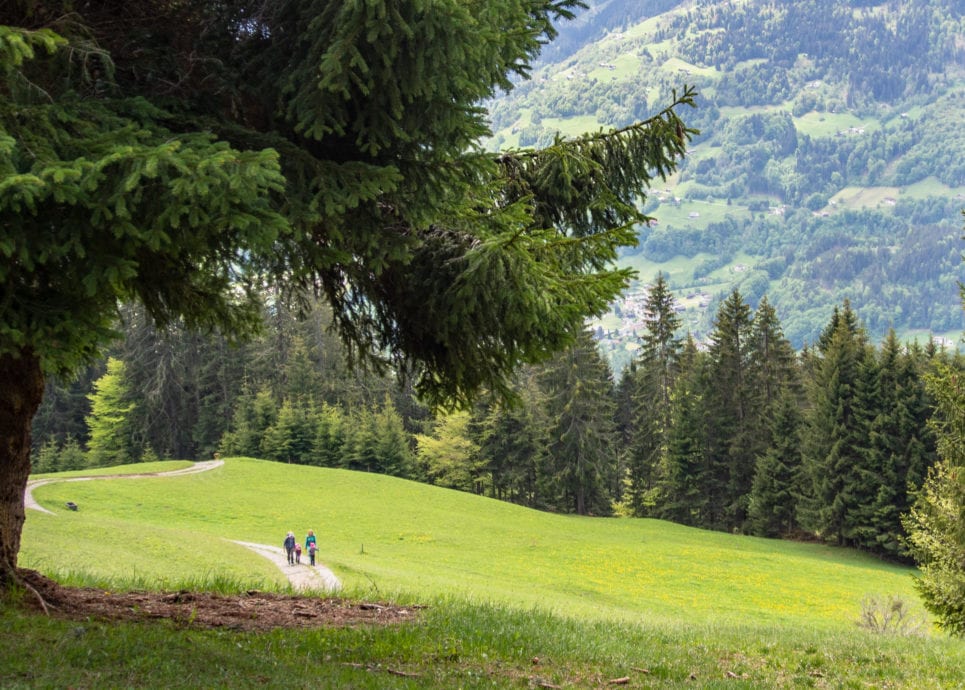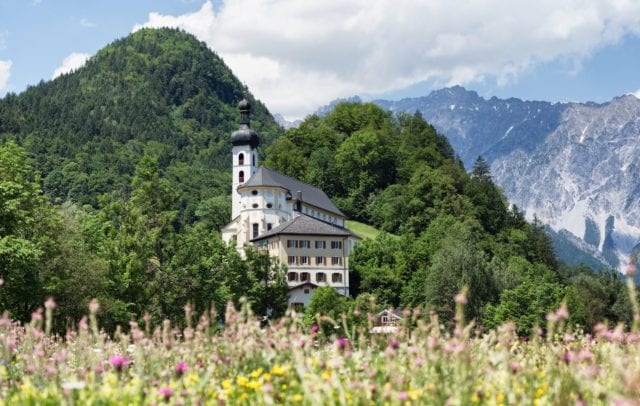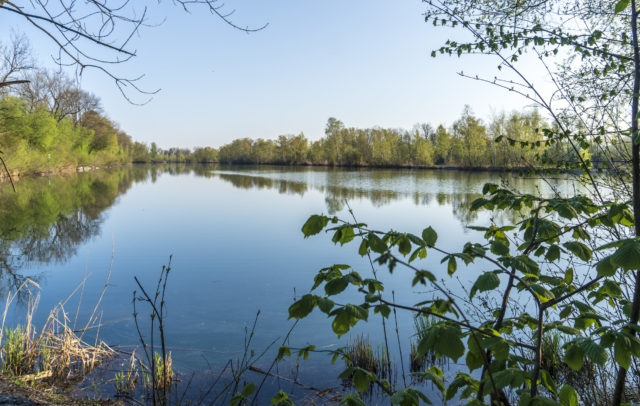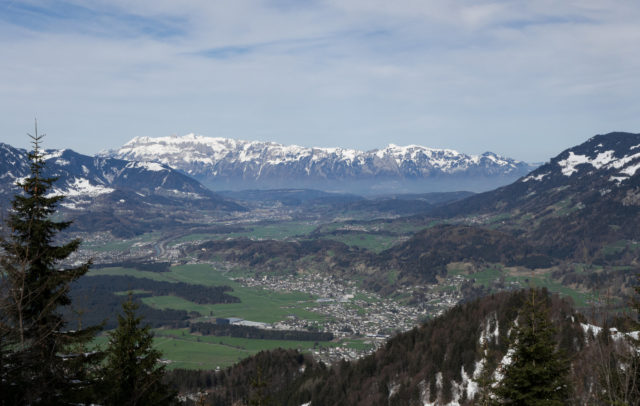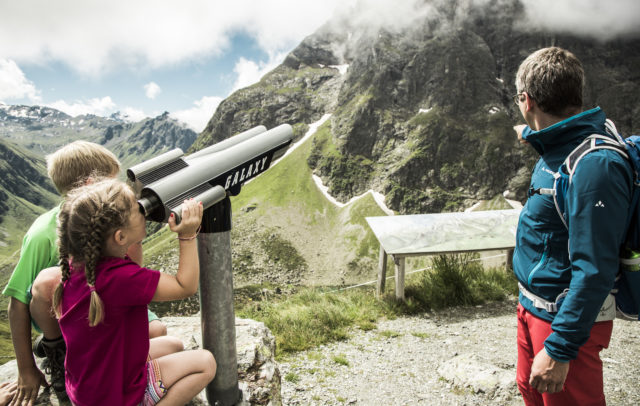Circular hike on Bartholomäberg
What is that living beside the trail?
On the circular hike on Bartholomäberg, a variety of particularly biodiverse habitats along the way invite you to slow down and take a closer look at the nature on the wayside. The traditional mountain pasture cultivation plays a big role in the biodiversity at the middle elevations of Montafon. A mountain pasture is an intermediate step in animal husbandry between the home farm in winter and the higher Alpine pasture in the summer. This three step farming method has dominated this cultivated landscape of the valley for centuries.
The ponds along the trail in this mountain pasture landscape are an important habitat for amphibians, dragonflies and others. Grass frogs and Alpine newts can be found here. Male Alpine newts are easy to identify in spring, when they are resplendent in orange and blue to impress the females. After mating, they transform back into rather inconspicuous, well camouflaged brown/green specimens.
Ponds, upland flat moors and low moors alternate around Sasälla and Fritzensee lake. This mosaic of natural environments is home to rare plants like the marsh helleborine or the carnivorous round-leaved sundew, which you can spot if you take a closer look. With its sticky leaves, this plant catches small flies and other insects to make up for the lack of nitrogen in this habitat’s soil in a fascinating way. However, you can also find better known varieties like the globeflower or marsh marigold.
Don’t touch!
Grass frogs, Alpine newts and other amphibians are strictly protected in Vorarlberg and must not be touched! Their skin is highly sensitive and easy to damage.

